Walk with me in Rimini - September 2015
Rimini was the most damaged town in Italy, after Montecassino, during WWII, even so it still conserves many traces of its interesting past intertwined between different periods of history.
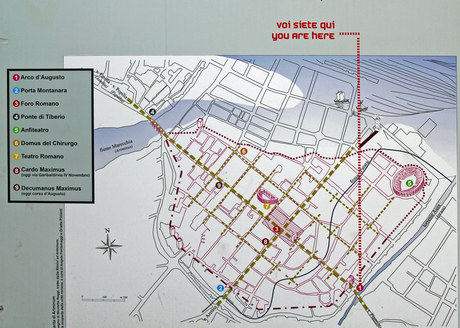
IMG 0059.jpg Map copy
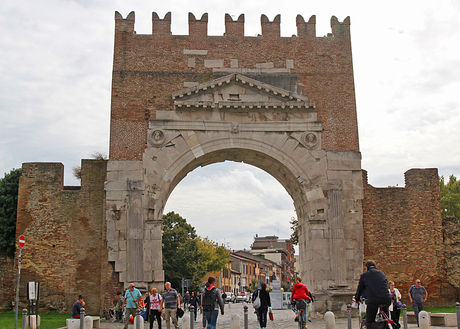
Arch of Augustus
The Arch of Augustus is the oldest surviving Roman triumphal arch, dating from 27 BC. As the name tells, the arch was built to celebrate Emperor Augustus.
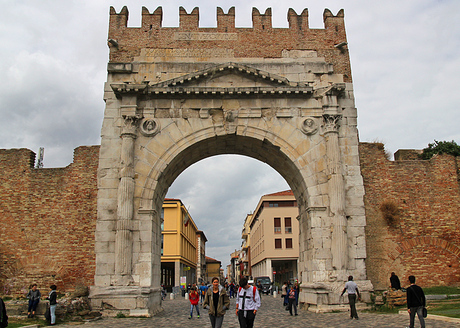
The divinities of Jupiter and Apollo (facing away from the city) and Neptune and Rome (facing inwards) – are all represented and are encased in oval ornaments. All representing the greatness of Rome and Augustus’ power.
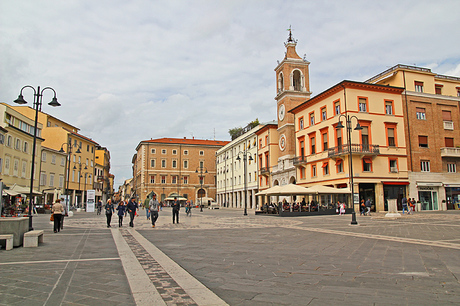
Piazza Tre Martiri, in reality a plaza from Roman times, but the name today is in honour of three partisans who died in 1944 – hanged by the retreating Nazis at the end of World War II. But, before the horrors of WWII, this plaza marked the meeting point of the Cardo and Decumanus and it is where the roman forum was located. Ariminum followed classic roman town planning concepts, having two main streets – the cardo(running on a north south axis, and corresponding to modern day Via Garibaldi and Via IV Novembre) and the decumanus (running on the east west axis, and corresponding to the modern day Corso d’Augusto), with a forum at the point where the two intersect. The forum’s role was similar to that of the Piazza in modern Italy.
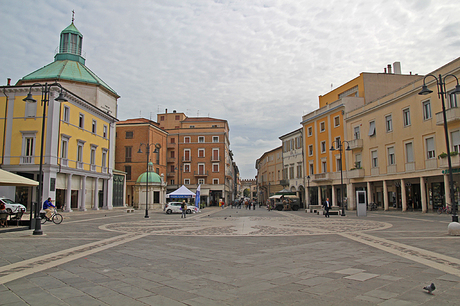
Tre Martiri looking back toward Arch of Augustus
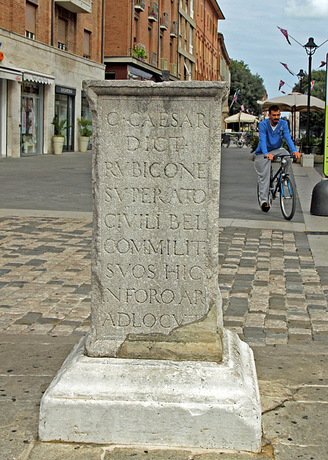
Rubicon plinth
The forum was the scene for Julius Caesar’s famous speech to his soldiers on the 10th of January 49 B.C, after having crossed the Rubicon, when he uttered the words “alea jacta est”, or “the die is cast”. The Rubicon in this period marked the border between Rome and what was known as Cisalpine Gaul (Northern Italy). Military commanders like Caesar were expressly forbidden from leading armies into Rome, for obvious reasons. When Caesar crossed the Rubicon river, he effectively declared war on the senate.
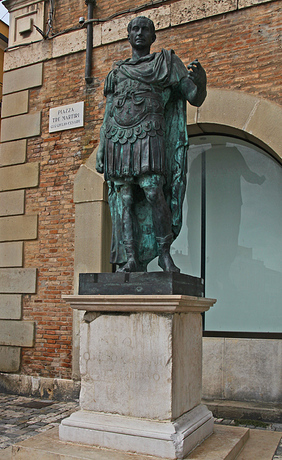
Caesar
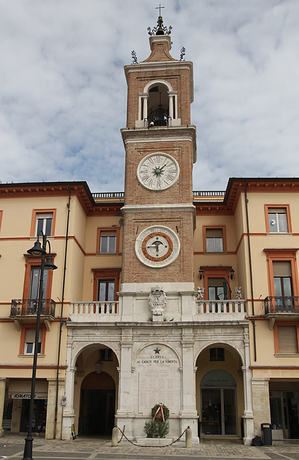
In the 16th Century the square underwent significant alterations and building work. It was during this period that the bell tower,Torre dell’Orologio was built (though reconstructed several times, the last being in the 1930s).
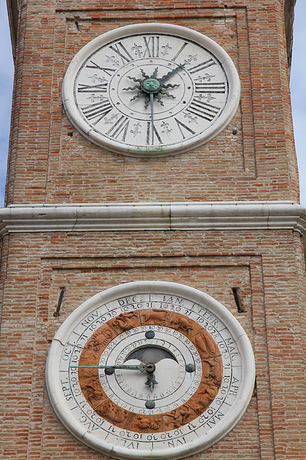
The clock face, which includes a solar/lunar calendar, dates from 1750.
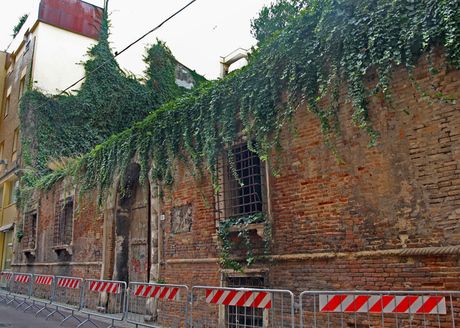
IMG 0045 Palazzo Lettimi
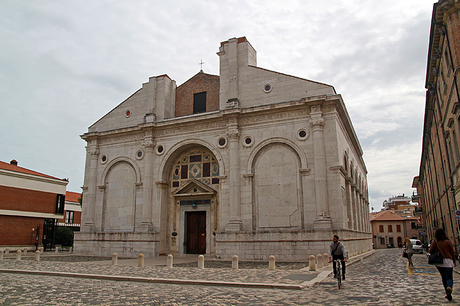
Along Via IV Novembre, just off Tre Martiri, you will find a temple with an interesting story behind it, the Malatesta Temple. Built during the renaissance (1450), but contrary to the typical notions of the time of giving glory only to God, this temple also glorifies a man named Sigismondo Pandolfo Malatesta, the lord of the city. Sigismondo had an affair with Isotta Degli Atti, who first was his mistress and then his third and final wife, so he had the idea of building the temple as a mausoleum for his wife and himself (still buried there to this day). The original design was in gothic style and not what you see today. Somewhere along the way Sigismondo made sure to “revamp” the temple by designing its white marble façade with the best architect of the time – Leon Batista Alberti. Unfortunately, the building was never finished – leaving the interesting asymmetrical shape we see today.

Piazza Cavour is one of the two central squares of Rimini and it was the heart of the city during medieval times. The only surviving monument from the 17th century: the statue of Pope Paul V (1614), attests to the papal domination of the time.
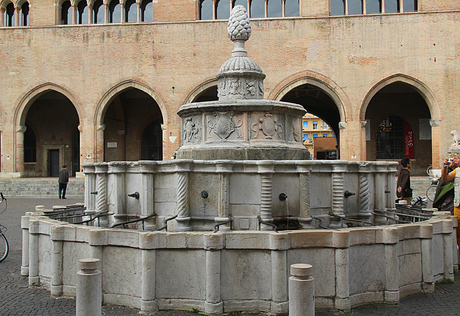
In the centre you’ll see a fountain with a pinecone on the top, Fontana della Pigna. Originally it had a statue of St. Paul on top of it, but for some reason, in 1809 the pinecone replaced it. History tells, Leonardo DaVinci used to love the sound of this fountain.
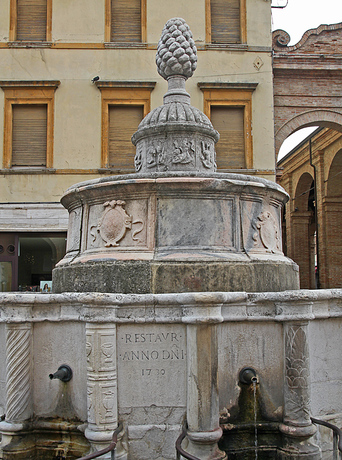
IMG 0096 pinecone fountain top
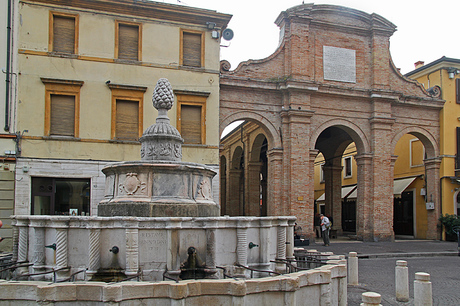
Fountain and fish market
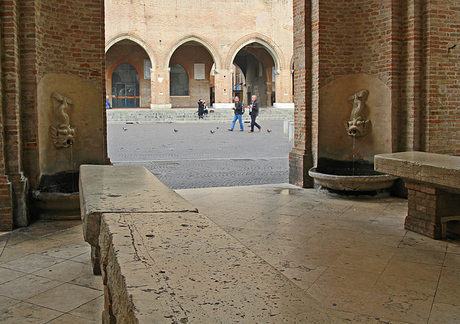
The old fish market was built in 1747 with an entrance facing onto Piazza Cavour. It was designed by Riminese architect Giovan Francesco Buonamici and features 2 lines of marble counters that run down it's entire length. Statues of dolphins with water coming out of their mouths stand in each corner.
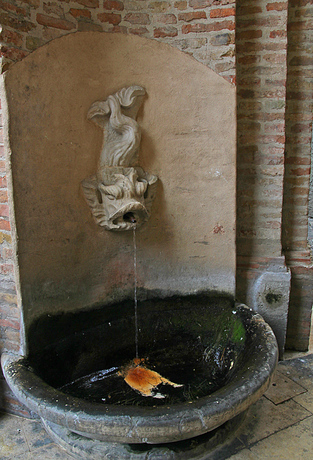
Fish basin
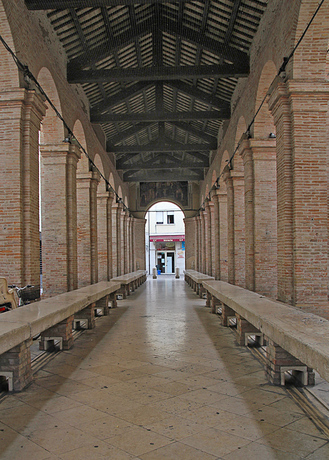
The old fish market, with its grand entrance and long open-air slabs of marble was constructed on the left-hand side of the square in 1743
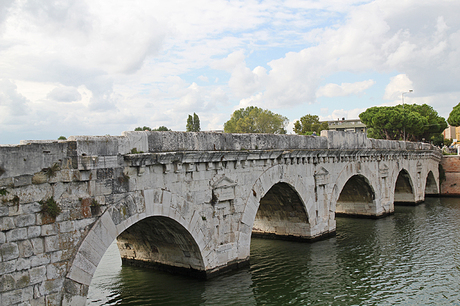
IMG 0108 Tiberius bridge
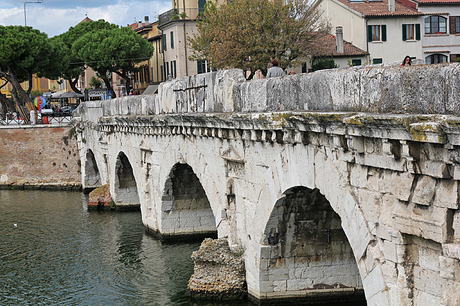
IMG 0111 Tiberius bridge 2

IMG 0115 Tiberius bridge footpath
|